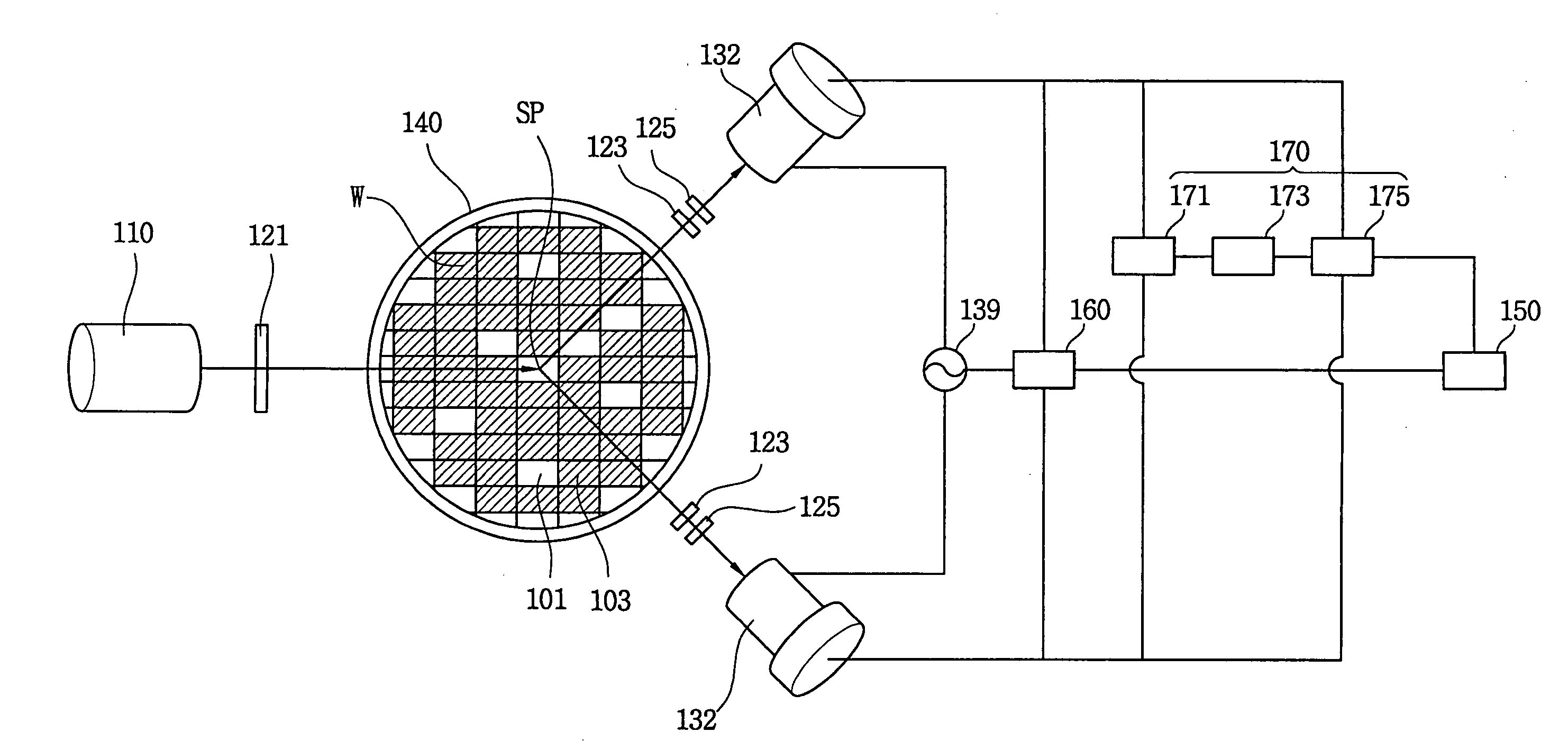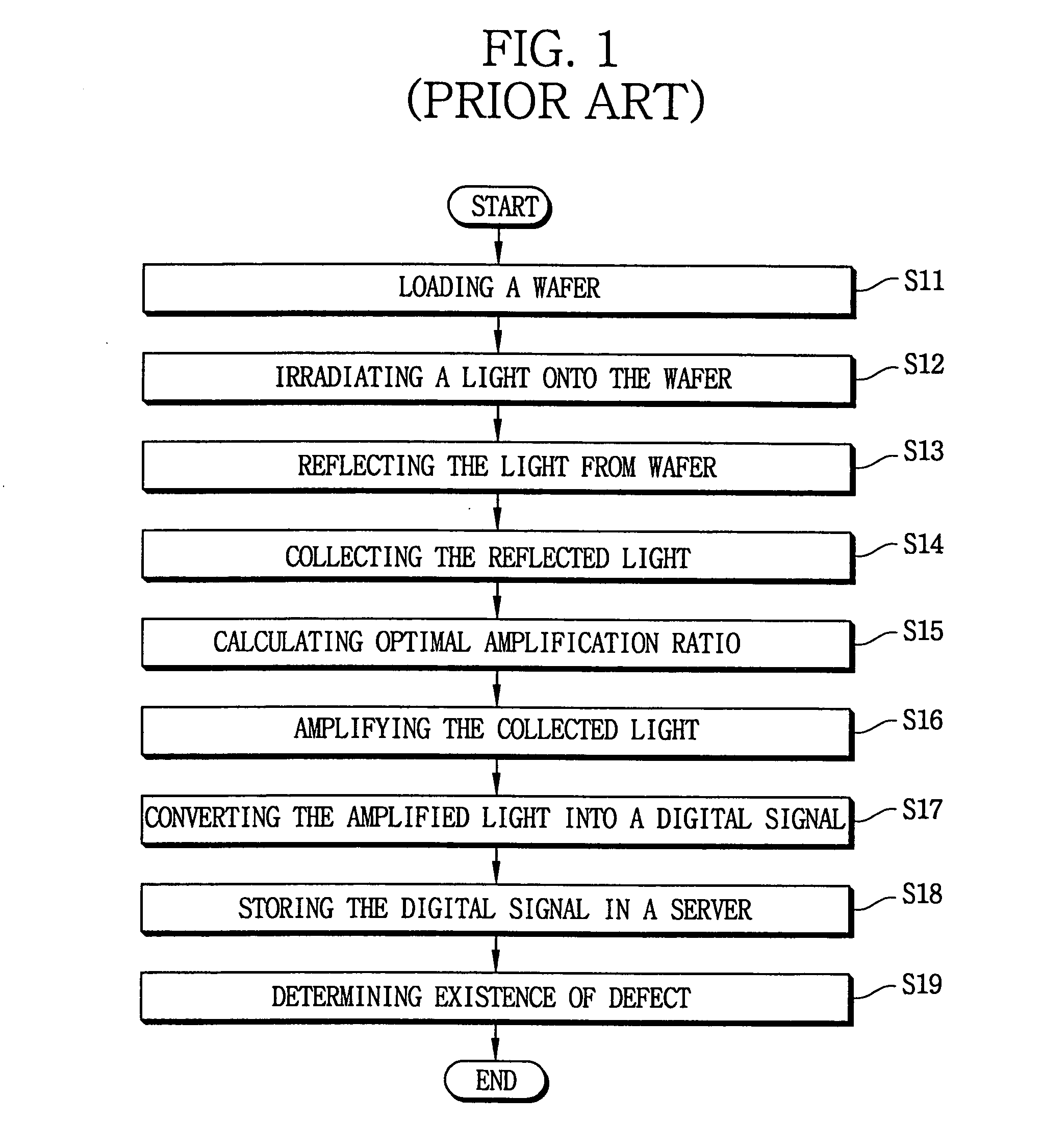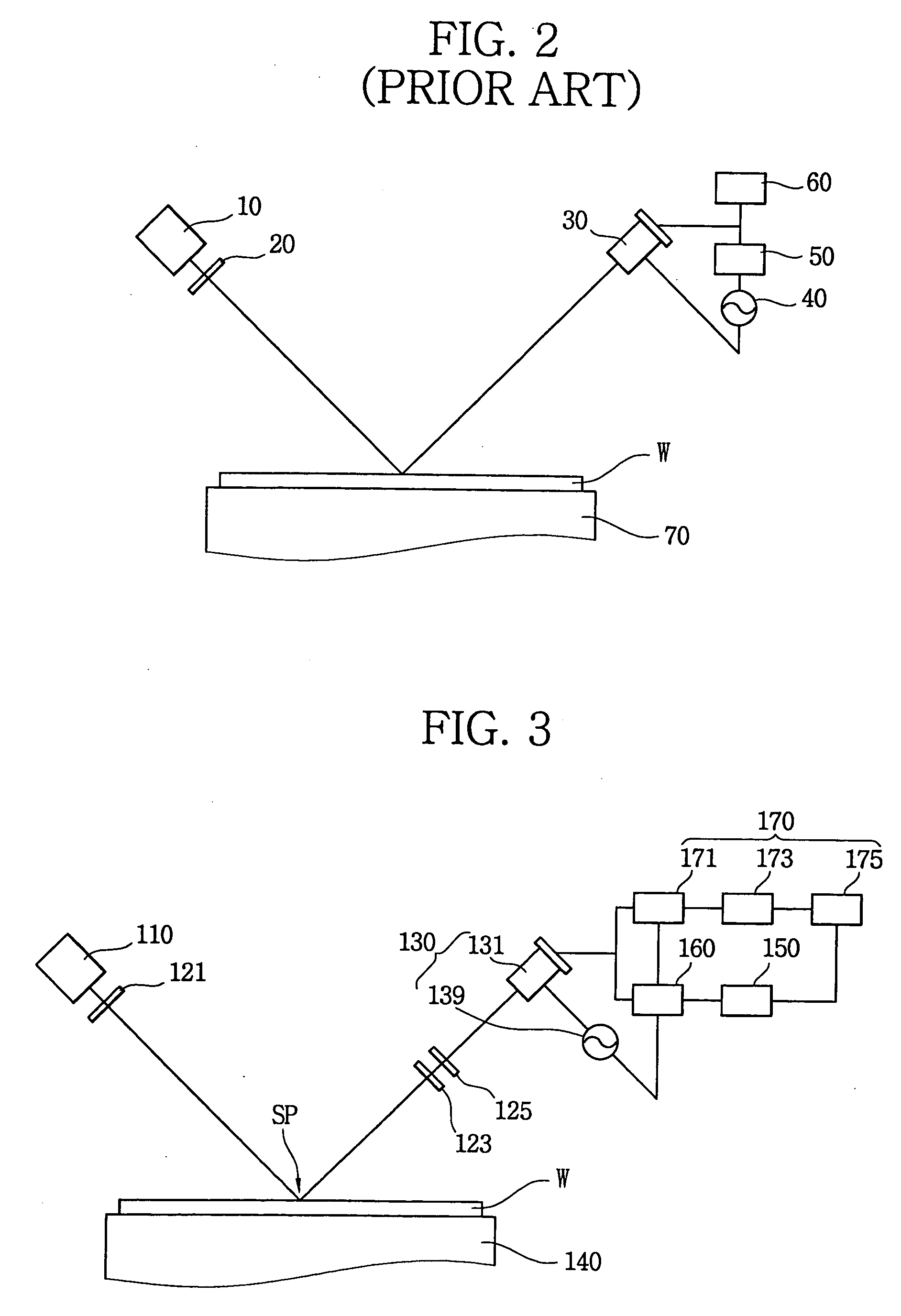Method and apparatus for inspecting defects
a technology of defects and inspection methods, applied in the direction of material analysis, semiconductor/solid-state device testing/measurement, instruments, etc., can solve the problems of generating defects, hundreds or thousands of defects found by inspection on a single substrate today, and reducing the number of inspections. the effect of accuracy inspection, preventing unnecessary inspection of the object, and preventing saturation of the object imag
- Summary
- Abstract
- Description
- Claims
- Application Information
AI Technical Summary
Benefits of technology
Problems solved by technology
Method used
Image
Examples
Embodiment Construction
[0039] The present invention now will be described more fully hereinafter with reference to the accompanying drawings, in which embodiments of the invention are shown. This invention may, however, be embodied in many different forms and should not be construed as limited to the embodiments set forth herein; rather, these embodiments are provided so that this closure will be thorough and complete, and will fully convey the scope of the invention to those skilled persons in the art.
[0040] Hereinafter, a method and an apparatus for inspecting a defect in accordance with one embodiment of the present invention are illustrated in detail.
[0041] Referring to FIG. 3, an apparatus for inspecting a defect includes a stage 140 on which a wafer W is disposed. Here, a surface of the wafer W is divided into regions. An emitter 110 irradiates a light onto regions of the wafer W. A detector 130 collects light reflected from the wafer W. The detector 130 also amplifies the collected light by a pre...
PUM
| Property | Measurement | Unit |
|---|---|---|
| angle | aaaaa | aaaaa |
| angle | aaaaa | aaaaa |
| angle | aaaaa | aaaaa |
Abstract
Description
Claims
Application Information
 Login to View More
Login to View More - R&D
- Intellectual Property
- Life Sciences
- Materials
- Tech Scout
- Unparalleled Data Quality
- Higher Quality Content
- 60% Fewer Hallucinations
Browse by: Latest US Patents, China's latest patents, Technical Efficacy Thesaurus, Application Domain, Technology Topic, Popular Technical Reports.
© 2025 PatSnap. All rights reserved.Legal|Privacy policy|Modern Slavery Act Transparency Statement|Sitemap|About US| Contact US: help@patsnap.com



